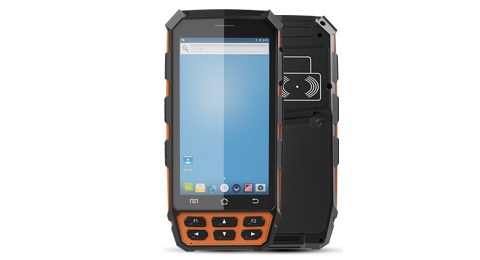400-9920-618
Garbage classification refers to the general term for a series of activities in which garbage is stored, sorted and transported according to certain regulations or standards, and then transformed into public resources. The purpose of classification is to increase the resource value and economic value of garbage, and strive to make the best use of it. RFID garbage classification collection and transportation supervision mode makes life more convenient.
Garbage classification is to quickly and effectively process garbage, collect and transport recyclable and non-recyclable garbage regularly, and process other garbage according to the existing collection and transportation mode. At present, most garbage is transported in two modes: truck-mounted barrels and compressed vehicles. Due to different places, the frequency of garbage generation is also different, so the processing time and frequency are also different, but from the garbage collection point To the garbage transfer station, and finally to the end of the garbage disposal facility.
The trash RFID tag is used in the collection and transportation monitoring system. It provides two different collection and transportation modes, and locates two types of trash cans and transport trash cans in different scenarios.
The designated garbage bins are mainly set for the collection and transportation of vehicles. By installing RFID tag readers to collect vehicles, the collection time, garbage bin number, location and other information are automatically collected by vehicles. The truck transports the garbage to the garbage station for processing, which is a powerful guarantee for the background data.
The main function of transporting garbage bins is to set up the collection and transportation of garbage motor vehicles. The RFID electronic tag is installed on the transportation trash can. The information of the electronic tag is read on the transport vehicle equipped with the RFID electronic tag reader and writer, including the number, time, and location on the transportation trash can. Transport the garbage to the transit site for rapid classification.
The garbage is actively classified by the citizens, so that it can be divided into recyclable, harmful garbage, and non-recyclable garbage, so that it can be quickly sorted at the garbage transfer station, and the data collection and monitoring are carried out separately. "Reserved barrels" and "transport barrels" are used for recycling and transportation management, effectively collecting and processing them automatically.
The system adopts the most advanced Internet of Things technology, collects all kinds of data in real time through RFID tags and card readers, and seamlessly connects with the background management platform through the self-organizing network system.
RFID tag readers and vehicle tags are installed on RFID tags installed in garbage bins (spots, transportation barrels), garbage trucks (flatbed trucks, recycling trucks); vehicle card readers installed at the door of the community; garbage transfer stations, garbage Weighbridge and vehicle tag readers installed at the terminal treatment facility; each reader can be connected to the background in real time through a wireless module, thereby realizing the real-time correlation of information such as the number, quantity, weight, time, and location of garbage cans and garbage trucks To achieve full supervision and tracing of garbage community sorting, garbage transportation, and garbage post-processing, to ensure the effectiveness and quality of garbage disposal and transportation, and to provide a scientific reference basis.
Based on the setting of two different types of buckets, "fixed buckets" or "classified buckets", the collection and transportation supervision mode is different. As a new technical means, RFID technology is becoming more and more mature. Because UHF RFID electronic tags have the characteristics of retroreflectivity, their application in metal trash cans require the use of anti-metal electronic tags. At present, apart from very small communities, it is necessary to promote the use of RFID trash cans in large areas. Because RFID electronic tags are relatively expensive compared to ordinary barcode tags, they are dozens of times higher than ordinary barcode tags. Original. During the operation, due to the damage of the trash can and the loss of the original RFID, it is necessary to continuously invest in maintenance. In addition, the garbage disposal work is related to the safety of people's livelihood, involving social stability, and ensuring the data security of the collection and transportation supervision system is also particularly important.
Currently there are mainly two versions of RFID technology used in waste bin, UHF tags and LF134.2KHz waste bin tags, that is why we have two options for different projects.
Typical Model: C5000-LF134.2KHz or C5000-UHF
Regions: Germany, Italy, Spain, Portugal, Denmark, Austria